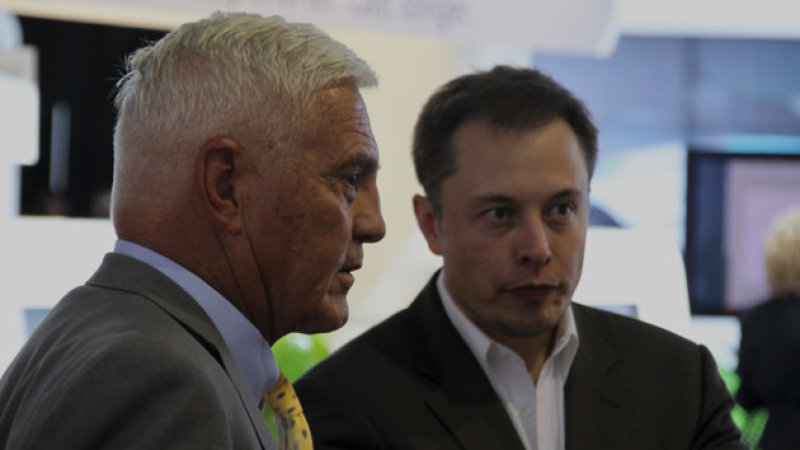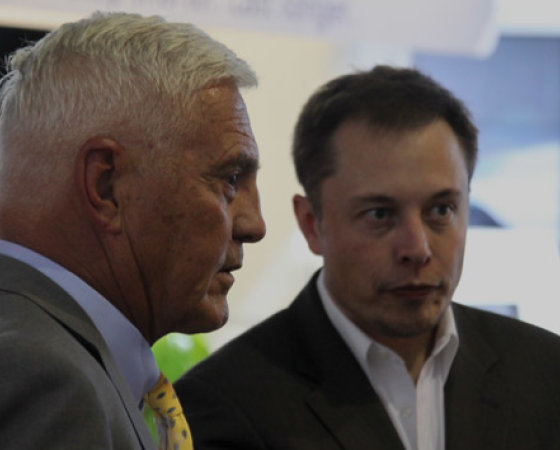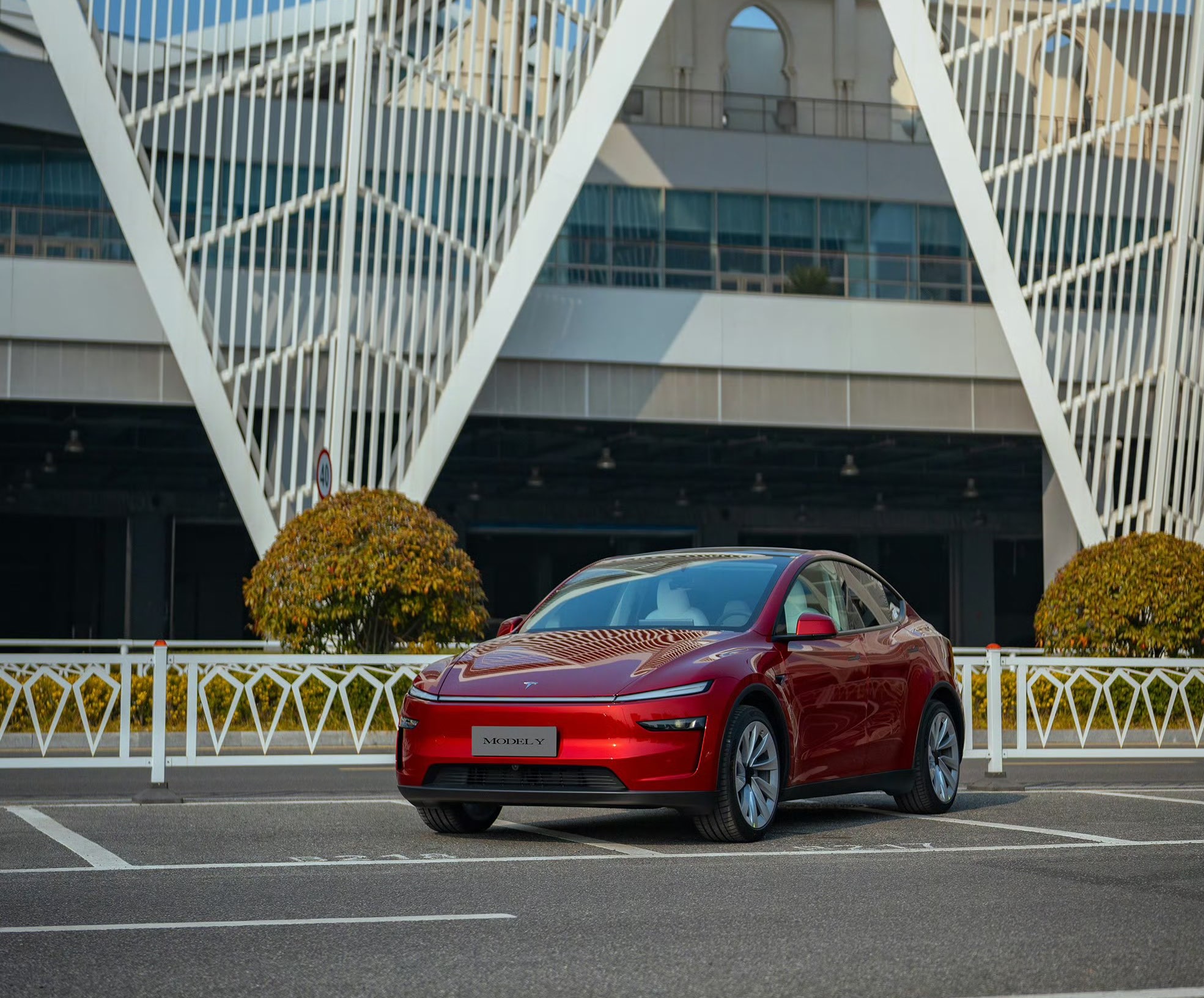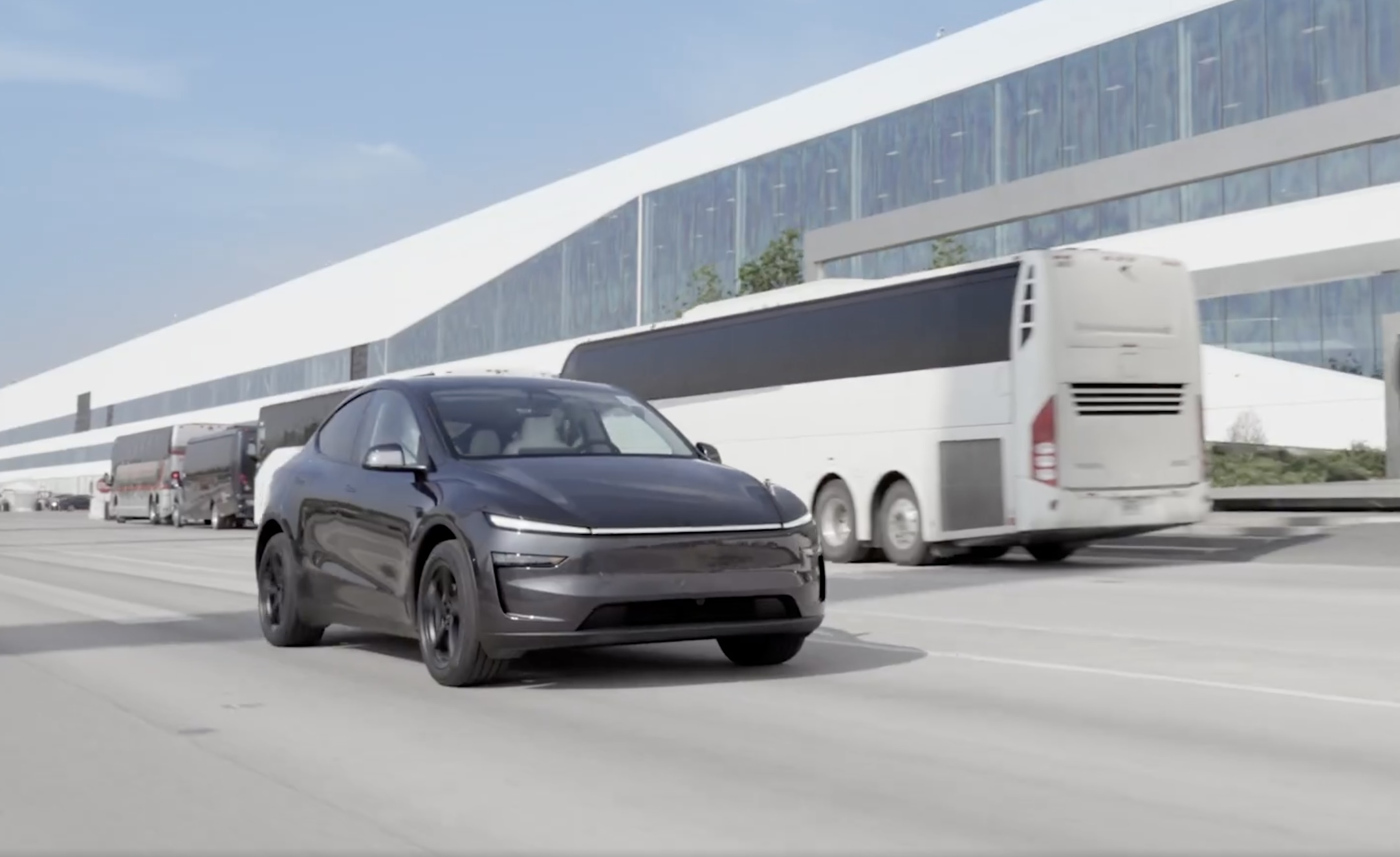

Investor's Corner
Tesla critic Bob Lutz vs. Elon Musk: A look back behind the bluster
In this corner, the father of the Chevrolet Volt, an auto industry veteran who has held senior positions at Chrysler, Ford and BMW, an unlikely advocate for EVs – a cigar-chomping ex-Marine who has called climate change “a crock.” Bob Lutz!
In the other corner, the mastermind of PayPal, SolarCity, and SpaceX, the archetypal Silicon Valley entrepreneur, who wants to electrify transportation and save Planet Earth – and if that doesn’t work, he’ll take us to Mars to start over. Elon Musk!
Back in the day, Bob Lutz was a champion of Tesla and Musk, citing the Roadster as a major inspiration for the Volt, and saying that he would “always owe them a debt of gratitude for having kind of broken the ice.” After Lutz left GM, he founded Via Motors, which set out to build plug-in hybrid vans and pickup trucks for commercial fleets, but has had a difficult time finding its market. The 85-year-old Lutz has written extensively about the auto industry. For whatever reason, he has evolved into a harsh critic of EVs, and especially Tesla. In 2016, he compared Musk to the leader of a religious cult. (Musk responded on Twitter, saying, “Dear cult members, I love you.”)
Dear cult members, I love you https://t.co/1OzRaSQzhT
— Elon Musk (@elonmusk) October 26, 2016
Lutz launched his latest salvo against the California upstarts at a forum sponsored by a provider of insurance for collectible cars, suggesting that collectors buy a Model S now before Tesla goes belly-up. He had nothing but praise for the car itself: “A Model S, especially with the performance upgrades, is one of the fastest, best handling, best braking sedans that you could buy in the world today,” he said. “The acceleration times will beat any $350,000 European exotic.”
However, Lutz said Elon Musk “hasn’t figured out the revenues have to be greater than costs…when you are perennially running out of cash you are just not running a good automobile company. I don’t see anything on the horizon that’s going to fix that, so those of you who are interested in collector cars, may I suggest buying a Tesla Model S while they’re still available.”
Above: Bob Lutz starts to discuss Tesla and Elon Musk at the 1:06:19 mark in the video (Youtube: Hagerty via InsideEVs)
“Twenty-five years from now, [the Model S] will be remembered as the first really good-looking, fast electric car,” Lutz told the LA Times. “People will say ‘Too bad they went broke.’”
This time, Musk does not appear to have responded publicly to Lutz’s zinger, but naturally, a number of his disciples have come to his defense. Enrique Dans, writing in Forbes, notes his admiration for Lutz’s writings on the auto industry, but believes that “he has missed something enormously important. In fact, possibly the most important difference between the old and the new economy: fundamentally, timeframes.”
Lutz (along with legions of stock-market analysts) sees Tesla’s ongoing losses as a sign of the company’s inevitable failure. However, according to Dans, “Seeing the bottom line as the be-all and end-all of management is problematic…The principle that revenue must exceed costs is Management 101. The tricky bit is how you define the timeframe in which that has to happen.”
As anyone following the Tesla story knows by now, the company’s stock market valuation has no apparent connection to the number of vehicles it’s producing. Tesla’s market cap, currently around $59 billion, exceeds that of Ford, and rivals those of GM and Honda (which, interestingly, was once the subject of the same sort of criticism now leveled at Tesla). Stock-market pundits tend to see this lofty valuation as madness, proof of the irrationality of Elon Musk’s mindless minions. However, Enrique Dans finds the reason in fundamental differences in the companies’ missions, and the timeframes in which they expect to fulfill them.
If you parse the pedantic “mission statements” on the legacy automakers’ web sites, you’ll find that they basically amount to: “We want to sell cars.” Tesla’s mission statement is very different: “To accelerate the advent of sustainable transport by bringing compelling mass market electric cars to market as soon as possible.”
Tesla doesn’t just want to sell cars, it wants to change the world. This massive difference of ambition is reflected in the longer timeframe that Tesla envisions.
“In the economy Bob Lutz and other traditional car industry players understand, the goal and the metrics were clear: the quarterly results,” Dans writes. “If they were below what the analysts expected, bad; if they were higher, good. End of story. But the rules have changed…For today’s companies, profits are not the goal, they’re the cherry on the cake. Because the idea is, in the long term, to move toward an infinitely more ambitious goal, one that entails a whole new level of change. Companies that have grasped this can spend many years, even decades, without making a profit, as long as they are able to create a narrative that shows they are on the right track toward the defined goal.”
Tesla’s long road to ultimate triumph is not unprecedented – it’s a path that’s been trodden by other tech companies that set out to transform an industry. “For how many years did Amazon continue turning in negative quarterly results while its share price rose steadily?” asks Dans. “Did Jeff Bezos…supply his investors with drugs to maintain their confidence? Yes, he did, actually: a powerful substance called growth and clarity in the use of funds obtained. Amazon’s mission was never to sell stuff, but to change the world.”
Amazon is not the only example. In this age of instant communication, in which whole industries can be radically transformed, or even disappear, “reporting a profit each quarter has never been less important.”
“If Lutz is right, if the grand plans for a new economy that will change the world are bullshit, Tesla will go bust,” Dans concedes. “But if Tesla’s plans and strategy make sense, it may well spend a long time in the red, but it will end up as the auto industry’s benchmark.”
Change is taking place ever faster, and humans’ attention spans are growing ever shorter, so it may seem counter-intuitive that the timeline for corporate success should grow longer. However, even in the fast-paced internet era, changing the world, or even one industry, can’t be done in the space of one quarter. Tesla’s mission is a risky one, but so far investors are willing to accept that risk.
Bob Lutz and Elon Musk look at the world in two different ways, and they have very different visions of the future. Which one will prove prophetic? We shall see.
===
Note: Article originally published on evannex.com, by Charles Morris
Source: Forbes

Investor's Corner
Mizuho keeps Tesla (TSLA) “Outperform” rating but lowers price target
As per the Mizuho analyst, upcoming changes to EV incentives in the U.S. and China could affect Tesla’s unit growth more than previously expected.

Mizuho analyst Vijay Rakesh lowered Tesla’s (NASDAQ:TSLA) price target to $475 from $485, citing potential 2026 EV subsidy cuts in the U.S. and China that could pressure deliveries. The firm maintained its Outperform rating for the electric vehicle maker, however.
As per the Mizuho analyst, upcoming changes to EV incentives in the U.S. and China could affect Tesla’s unit growth more than previously expected. The U.S. accounted for roughly 37% of Tesla’s third-quarter 2025 sales, while China represented about 34%, making both markets highly sensitive to policy shifts. Potential 50% cuts to Chinese subsidies and reduced U.S. incentives affected the firm’s outlook.
With those pressures factored in, the firm now expects Tesla to deliver 1.75 million vehicles in 2026 and 2 million in 2027, slightly below consensus estimates of 1.82 million and 2.15 million, respectively. The analyst was cautiously optimistic, as near-term pressure from subsidies is there, but the company’s long-term tech roadmap remains very compelling.
Despite the revised target, Mizuho remained optimistic on Tesla’s long-term technology roadmap. The firm highlighted three major growth drivers into 2027: the broader adoption of Full Self-Driving V14, the expansion of Tesla’s Robotaxi service, and the commercialization of Optimus, the company’s humanoid robot.
“We are lowering TSLA Ests/PT to $475 with Potential BEV headwinds in 2026E. We believe into 2026E, US (~37% of TSLA 3Q25 sales) EV subsidy cuts and China (34% of TSLA 3Q25 sales) potential 50% EV subsidy cuts could be a headwind to EV deliveries.
“We are now estimating TSLA deliveries for 2026/27E at 1.75M/2.00M (slightly below cons. 1.82M/2.15M). We see some LT drivers with FSD v14 adoption for autonomous, robotaxi launches, and humanoid robots into 2027 driving strength,” the analyst noted.
Investor's Corner
Tesla stock lands elusive ‘must own’ status from Wall Street firm

Tesla stock (NASDAQ: TSLA) has landed an elusive “must own” status from Wall Street firm Melius, according to a new note released early this week.
Analyst Rob Wertheimer said Tesla will lead the charge in world-changing tech, given the company’s focus on self-driving, autonomy, and Robotaxi. In a note to investors, Wertheimer said “the world is about to change, dramatically,” because of the advent of self-driving cars.
He looks at the industry and sees many potential players, but the firm says there will only be one true winner:
“Our point is not that Tesla is at risk, it’s that everybody else is.”
The major argument is that autonomy is nearing a tipping point where years of chipping away at the software and data needed to develop a sound, safe, and effective form of autonomous driving technology turn into an avalanche of progress.
Wertheimer believes autonomy is a $7 trillion sector,” and in the coming years, investors will see “hundreds of billions in value shift to Tesla.”
A lot of the major growth has to do with the all-too-common “butts in seats” strategy, as Wertheimer believes that only a fraction of people in the United States have ridden in a self-driving car. In Tesla’s regard, only “tens of thousands” have tried Tesla’s latest Full Self-Driving (Supervised) version, which is v14.
Tesla Full Self-Driving v14.2 – Full Review, the Good and the Bad
When it reaches a widespread rollout and more people are able to experience Tesla Full Self-Driving v14, he believes “it will shock most people.”
Citing things like Tesla’s massive data pool from its vehicles, as well as its shift to end-to-end neural nets in 2021 and 2022, as well as the upcoming AI5 chip, which will be put into a handful of vehicles next year, but will reach a wider rollout in 2027, Melius believes many investors are not aware of the pace of advancement in self-driving.
Tesla’s lead in its self-driving efforts is expanding, Wertheimer says. The company is making strategic choices on everything from hardware to software, manufacturing, and overall vehicle design. He says Tesla has left legacy automakers struggling to keep pace as they still rely on outdated architectures and fragmented supplier systems.
Tesla shares are up over 6 percent at 10:40 a.m. on the East Coast, trading at around $416.
Investor's Corner
Tesla analyst maintains $500 PT, says FSD drives better than humans now
The team also met with Tesla leaders for more than an hour to discuss autonomy, chip development, and upcoming deployment plans.

Tesla (NASDAQ:TSLA) received fresh support from Piper Sandler this week after analysts toured the Fremont Factory and tested the company’s latest Full Self-Driving software. The firm reaffirmed its $500 price target, stating that FSD V14 delivered a notably smooth robotaxi demonstration and may already perform at levels comparable to, if not better than, average human drivers.
The team also met with Tesla leaders for more than an hour to discuss autonomy, chip development, and upcoming deployment plans.
Analysts highlight autonomy progress
During more than 75 minutes of focused discussions, analysts reportedly focused on FSD v14’s updates. Piper Sandler’s team pointed to meaningful strides in perception, object handling, and overall ride smoothness during the robotaxi demo.
The visit also included discussions on updates to Tesla’s in-house chip initiatives, its Optimus program, and the growth of the company’s battery storage business. Analysts noted that Tesla continues refining cost structures and capital expenditure expectations, which are key elements in future margin recovery, as noted in a Yahoo Finance report.
Analyst Alexander Potter noted that “we think FSD is a truly impressive product that is (probably) already better at driving than the average American.” This conclusion was strengthened by what he described as a “flawless robotaxi ride to the hotel.”
Street targets diverge on TSLA
While Piper Sandler stands by its $500 target, it is not the highest estimate on the Street. Wedbush, for one, has a $600 per share price target for TSLA stock.
Other institutions have also weighed in on TSLA stock as of late. HSBC reiterated a Reduce rating with a $131 target, citing a gap between earnings fundamentals and the company’s market value. By contrast, TD Cowen maintained a Buy rating and a $509 target, pointing to strong autonomous driving demonstrations in Austin and the pace of software-driven improvements.
Stifel analysts also lifted their price target for Tesla to $508 per share over the company’s ongoing robotaxi and FSD programs.








